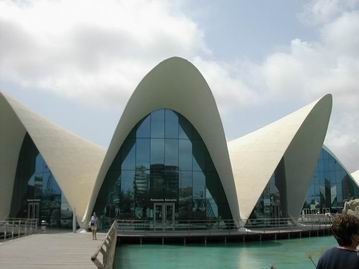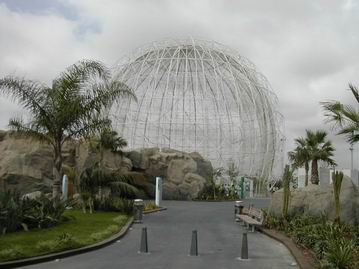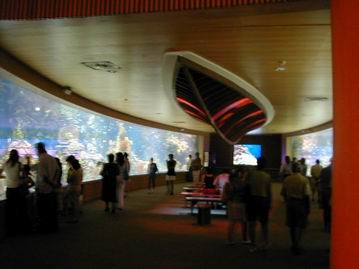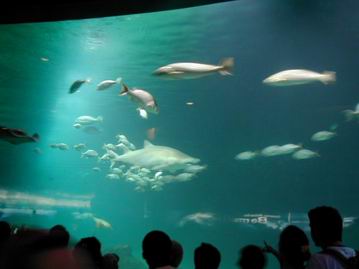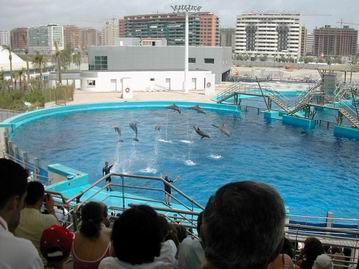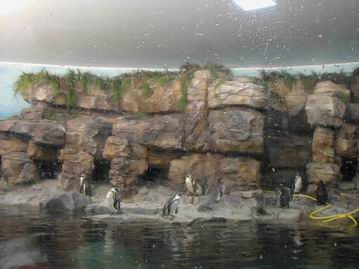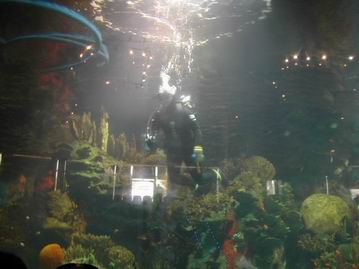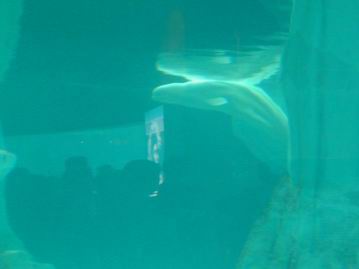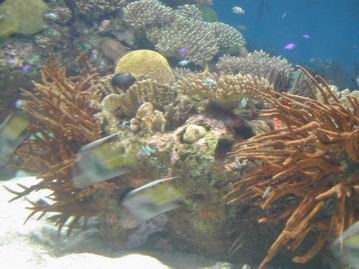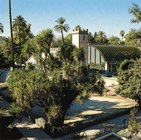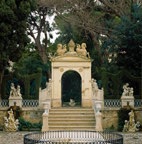The Valencia city
The old helmet
The old helmet is defined by the route of the tram that marks the path for
where the walls of the city were up to 1865. Here we find the biggest concentration
of monuments, belonging in their great majority to the time of splendor after
the reconquest, in 1238, when Jaime I took the city of Moorish hands. This
way one can make a comfortable one traveled on foot, going by the last squares
and solitary alleys that are in Valencia:
- We begin in the Cathedral, of primitive Gothic style (to weigh that to her
they have been added during the successive centuries parts of diverse styles).
he/she Has three covers, a romanic, another Gothic one and another Baroque
one.
-
-
-
-

-
- The bigger Chapel is Baroque and the lateral neoclassicists. It highlights
in her their impressive dome, the tower steeple of plant octogonal, symbol
of the city, to which we call the valencian the " Micalet " (or
Miguelete).
-
-

-
-
- From their roof a beautiful panoramic is sighted; (and if you has
patience like Victor Hugo, maybe be able to count the 300 steeples that the
one affirmed that it possessed the city).
But the most extraordinary fact is if he/she doubts the Room to Surrender,
where the one is worshipped that is considered the Sacred Chalice that Jesus
Christ consecrated in the Last Dinner. The Museum of the Cathedral exposes
paintings of Goya and Jacomart, goldwork of Cellini, sizes of Paggibonsi,
squares of the Valencian School of the s. XV to the XVII one and an extraordinary
Custody that to be more modern he/she doesn't have less value than others
of more antiquity.
-
- Next to the Cathedral, the Basilica of the Virgen de los Desamparados ones
is, (Mare de Deu dels Desemparats").
-
-

-
- The employer of the city, and in an immediate alley the Almudín,
warehouse of wheat of the medieval time, restored today and transformed into
Museum. Continuing toward the East, in a small square, San Esteban's Church
is, where, according to the tradition, the Cid married to its daughters and
San Vicente Ferrer it was baptized. The Palace of the Admirals from Aragon
is in the near street of the Palau, and in that of Foremast of Gentlemen,
the Church of San Juan of the Hospital, of elegant Gothic, as it is it, if
not even more, Sacred Domingo's Convent, in the Square of Tetuán, in
spite of the additions of the XIV and XV centuries in their interior or the
cover designed by Felipe II.
- The River
In the river Turia meets with three bridges of ogival appearance, the Bridge
of the Real one, the Bridge of the Trinidad and the Bridge of Serranos, with
the Towers of Serranos.
-
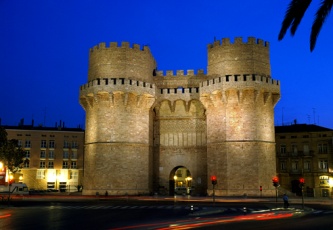
-
- Antigua door of the wall (s. XV) that has as much luxury of arch of Victory
as bastion solidity castrates you.
The bed of the river Turia, caused in the year 1957 a flood that caused numerous
deads and it destroyed great quantity of buildings, reason why he/she decided
to deviate it to the outskirts of the city. Now the old bed of the river is
the scenario of the sport and of the recess of all the valencians since for
him go for a walk, they run, they go in bicycle (mainly of mountain), they
play soccer, to the rugby, to the base-ball, they skate and they make gymnastics
to newspaper the thousands of citizens that congregate in this pleasant lung
of life that is The River.
The IVAM (Institute Valencian of Modern Art) it is a great museum that the
lovers of the new tendencies of the art should not get lost (Sculpture and
Painting). one of the three better museums of modern art of Spain Constitutes.
It is located in front of the old bed of the river, to the height of the School
of Languages that is exactly to the other side of the bed.
- The rasher and their proximities.
Down the street of Serranos we arrive at the Square of Manises, where is the
building of the Delegation, located in a beautiful palace and the later facade
of the Palace of the Generality, headquarters of the Government of the Generalitat.
This building of the s. XV he/she offers great interest for the paintings
murals of the Living room of the Cortes, the Golden Living room.
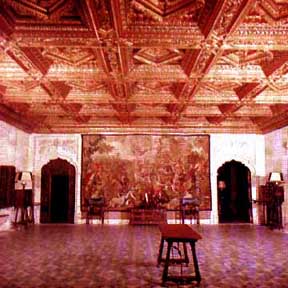
-
- And the Gallery of Portraits of the Kings of Valencia.
Of here we arrive to the street of The Gentlemen; formerly aristocratic neighborhood
whose continuation finishes with other famous portal the Towers of Quart (1441).
-
-
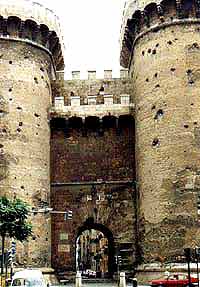
-
- And to the square of the Market where is the one that maybe is the best
monument valencian architectural; The Rasher,

- Built by the valencian merchants in 1483 as headquarters of the Recruiting
and of the Consulate of the Sea.
Fair to the side is the Baroque Church of the Sacred Juanes whose vault painted
by Palomino, in its time had one of the biggest paintings murals in the world.
-
-

-
- and the Bell of Santa Catalina's Church, also Baroque.
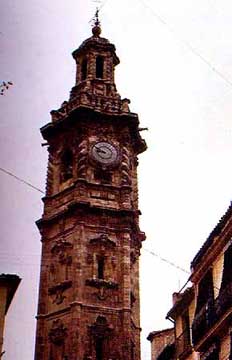
From here you arrives Lathe down the street at the Marquis's of Two Waters
Palace, of style rococó.
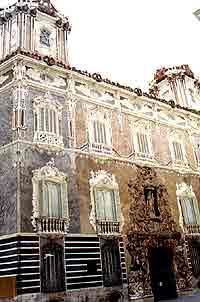
- Their delirious cover owes to the imagination of the painting Hipólito
Rovira that died crazy. In contrast with this would be of great interest to
visit the Patriarch's School (1603), for their typical austerity of the Spanish
Rebirth, or the University, neoclassicist that is exactly behind, or the neighbor
and grandiose Palace of Justice, also neoclassicist, crowned with Carlos'
great statue III and to few meters, the new bridge designed by the valencian
architect Santiago Calatrava, inaugurated in 1995 and well-known as the Comb
for the inhabitants of this city.
- The neighborhood of the Carmen
One cannot say that one knows the essence of Valencia if one doesn't know
this neighborhood; the purest and riotous, maybe is the superlative of what
is the whole city in general. Their central square, to which flush the streets
of more mercantile movement, and those of the leisure, where the shows, bars
and more credited restaurants are, it presents the most alive show. The terraces
of the coffees, the positions of flowers, the windows, and the continuous
one to go and to come until the night makes of this neighborhood a special
attractiveness.
- The enlarge
The enlarge, as reformation urbanistic recent offers the gentle atmosphere
that provokes their bourgeois population and bureaucrat. A walk for this area
will make him understand today's Valencia.
-
- The gardens
As tells the song Valencia it is the earth of the flowers.. and these they
can be appreciated here in their most intense coloring and fragrance. For
he/she swims it better than taking time to be gone for a walk by the beautiful
parks that he/she offers this city. The Gardens of the Boulevard or the Gardens
of Monforte offer that beautiful atmosphere, neoclassicist and romantic, of
the XVIII century with their beautiful arriates and grove adorned with statues
and sources with games of water. It is worthwhile to visit The Gardens of
the Real one or Viveros that possess the most beautiful roses and their pinegroves,
on the mound on which the old real palace was built, they are the walker's
delight that he/she will be able to get lost between curious ruins and sources. -
-
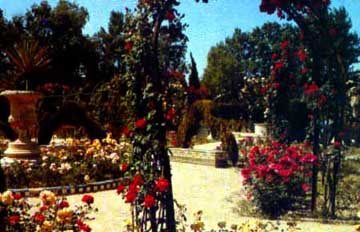
-
- In him is the zoological park. A more original atmosphere offers the Botanical
Garden, rich in exotic plants.
-
- Additionally Valencia has a good one I number of walks landscaped as the
Walk from Valencia to the Sea in the University City or the Great Road, where
the mediterranean freshness is breathed.
HEMISFERIC I CIUTAT DE LES ARTS I
LES CIENCIES
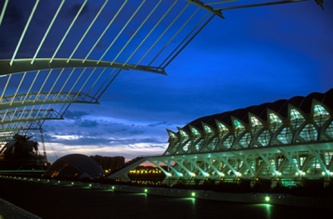
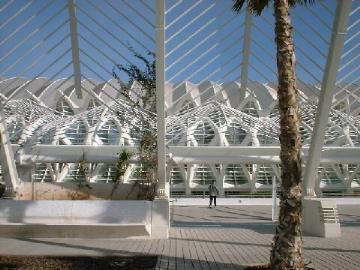
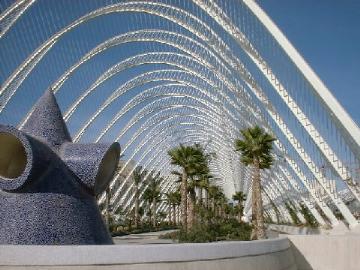

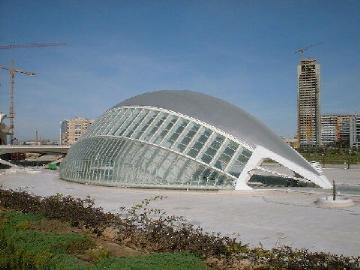
L'OCEANOGRAFIC

